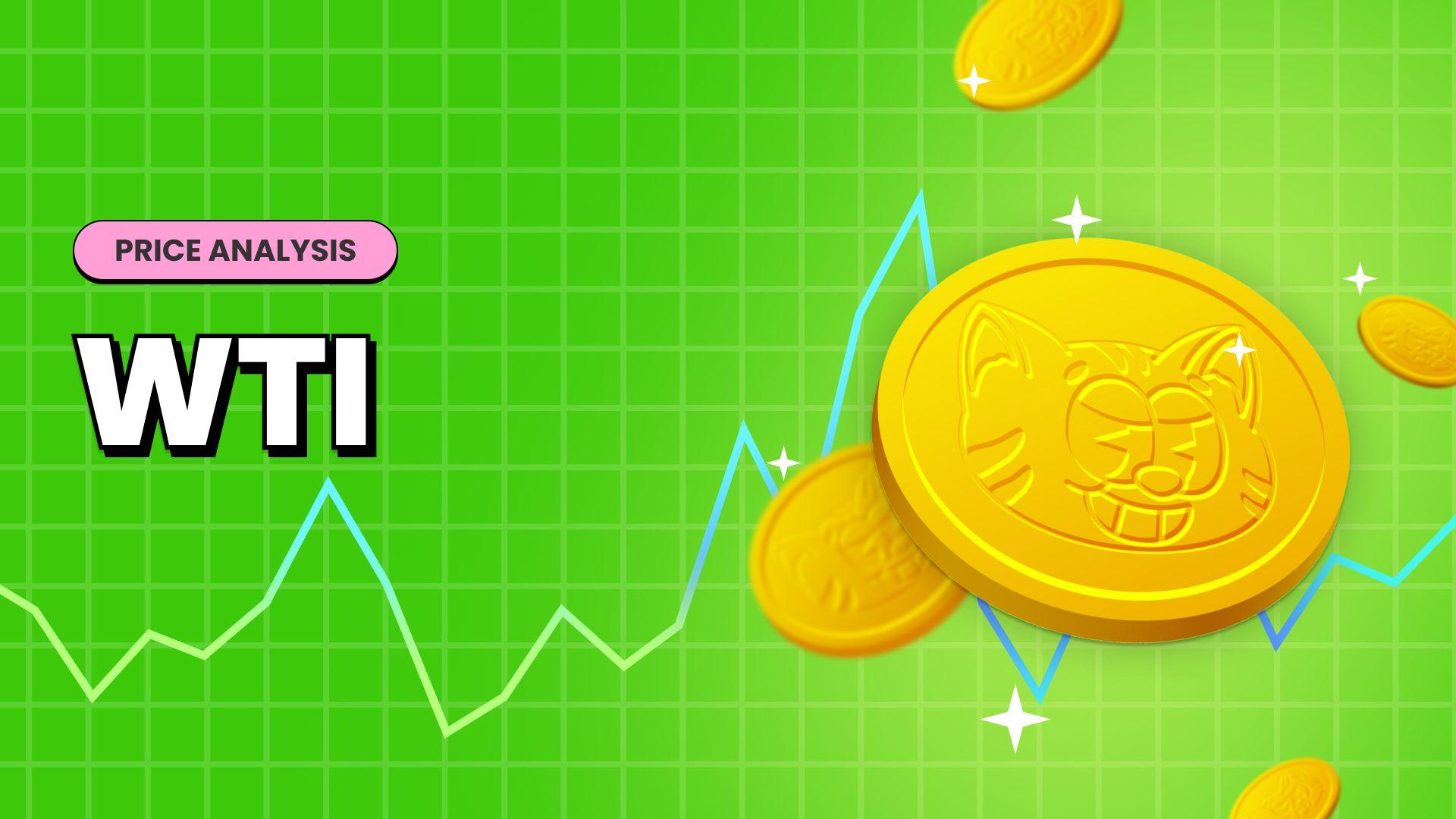US WTI Crude Oil Steadies Above The $75.00 Mark As Markets Overlook Aggressive Rate Hikes Expectations






- US WTI Crude oil futures steadied above the $75.00 mark in early Asian trade on Tuesday as fears of rate hikes fall
- Stronger-than-expected new orders for core U.S.-manufactured capital goods in January renew concerns over higher interest rates by the Federal Reserve
- Escalating tension between U.S. and China, as well as a jump in crude oil inventories, weigh down on US WTI Crude oil prices
- Markets await oil stock data and expect a build-up in Crude oil inventories in the week ending Feb. 24

US WTI Crude Oil futures rose modestly on Tuesday during the early Asian trading session after falling below the $75.00 mark after new data on Monday raised concerns about further interest rate hikes by the FED, which could slow economic growth and oil demand.
As per press time, US WTI Crude oil futures gained 18 cents to trade at $75.83 per barrel, while its counterpart Brent Crude oil futures gained 14 cents to trade at $82.07 per barrel amid a weak U.S. dollar demand.

Durable goods orders in the U.S., which measure the cost of orders received by manufacturers of goods meant to last at least three years, sank 4.5% month-over-month in January of 2023, the most since April of 2020, reversing from a downwardly revised 5.1% jump in December, according to a report released on Monday by the U.S. Census Bureau. The figures compare with market forecasts of a 4% decline, prompted by a 13.3% slump in orders for transportation equipment, namely orders for nondefense aircraft and parts (-54.6%). Excluding transportation, durable goods orders were up 0.7%. Meanwhile, orders declined for capital goods (-12.8%), namely nondefense ones (-15.3%).
That said, the stronger-than-expected new orders for core U.S.-manufactured capital goods in January kept a lid on oil prices on any meaningful uptick, while U.S. Fed Governor Philip Jefferson said inflation for services in the United States remained "stubbornly high" was also seen as another factor adding downside pressure on Crude oil prices.
Commenting on the report, "The stronger than expected inflation numbers raised concerns about further hikes in interest rates, which has already curbed demand in the U.S.," ANZ analysts said in a client note.
Weighing down on US WTI Crude Oil prices were the escalating tensions between China and the United States, which have significantly impacted the stock markets in China and Hong Kong. Investors were eagerly waiting for indications about future policies from the upcoming National People's Congress.
On Sunday, White House National Security Adviser Jake Sullivan stated that China had not taken any steps towards supplying Russia with deadly military equipment against Ukraine. He also mentioned that the U.S. had conveyed privately that any such action would result in severe repercussions.
Further weighing on US WTI Crude Oil prices was the U.S. Energy Information Administration (EIA) report last week that showed stocks of crude oil in the United States had jumped by 9.895 million barrels in the week ended Feb. 17, 2023, following a 10.507 million barrels gain in the previous week. It was the second weekly solid gain since the first week of January 2023, compared with market expectations of a 1.233 million barrels increase.
Meanwhile, Russia halted oil supplies to Poland via the Druzhba pipeline over the weekend, according to Polish refiner PKN Orlen. Pipeline operator Transneft cited paperwork irregularities, although this move came shortly after Poland said it had delivered its first Leopard tanks to Ukraine.

On Monday, Russian oil pipeline monopoly Transneft said it started pumping oil from Kazakhstan to Germany via Poland through the Druzhba pipeline while halting deliveries to Poland. It is worth noting that Russia, the world's third-largest crude producer, announced earlier this month plans to cut up to 25% of oil exports from its western ports in March, which is more than the 500,000 barrel per day supply cut that Moscow had previously announced. Still, most analysts see a European Union (E.U.) ban on Russian seaborne oil imports and an international price cap having little impact on overall global supply.
As we advance, the market will look out for the latest U.S. Oil stocks data from the American Petroleum Institute industry group later today and the government's Energy Information Administration on Wednesday for other demand indicators. A preliminary Reuters poll showed analysts expected crude stocks to grow by 400,000 barrels before Feb. 24, marking the tenth consecutive week of builds.

Technical Outlook: Four-Hours US WTI Crude Oil Futures Price Chart

From a technical standstill, the price has extended the sharp rebound from the vicinity of the $74.96 level and staged some follow-through buying above the $75.00 mark. The outlook is bearish, as depicted by the technical oscillators holding in the bearish territory and the acceptance of price below the technically strong 200 Exponential Moving Average(EMA) at the $77.51 level. However, a move above the Signal line in both technical oscillators (RSI and MACD) would trigger Bulls to continue pushing up the price. The uptick, however, would face an immediate hurdle plotted by a downward sloping trendline extending from mid-February 2023 swing high.
On the flip side, if dip-sellers and technical traders jump in and trigger a bearish turnaround, the price will first find support at the $75.00 psychological mark. If sellers pierce this key floor, downside pressure could accelerate, paving the way for a drop toward the key demand zone ranging from $74.23 - 74.34. A sustained weakness below this level would expose US WTI crude oil prices to further downside moves.

